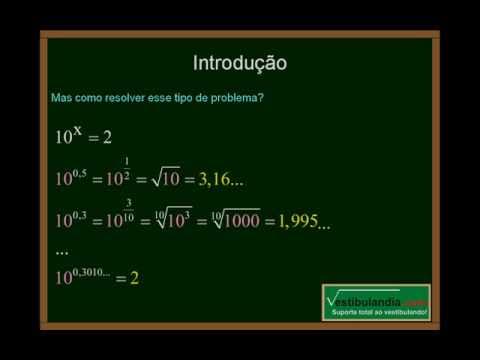Cara mudah persamaan eksponen (Perpangkatan)
Summary
TLDRThis video script from 'Mathematics Great' channel discusses solving exponential equations in a simple way. It covers examples including 4^x = 1/4, 1/2^5x + 4 = 64, and 4^3x + 1 = 16^2x, demonstrating step-by-step methods to equate bases and isolate variables. The tutorial aims to make complex concepts easy to understand, encouraging viewers to engage with the content.
Takeaways
- 🔢 The video discusses easy ways to solve exponential equations.
- 👍 Remember to like, subscribe, comment, and share the video for more content.
- 📈 Example 1: Solve 4^x = 1/4 by rewriting 1/4 as 4^-1, resulting in x = -1.
- 📉 Example 2: Solve (1/2)^(5x + 4) = 64 by expressing 64 as 2^6 and simplifying to find x = -2.
- 🔄 Example 3: Solve 4^(3x + 1) = 16^(2x - 1) by expressing 16 as 4^2 and solving to get x = 3.
- 🧮 Example 4: Solve (1/4)^(-4x + 10) = 2^(3x + 5) by converting 1/4 to 2^-2 and solving to find x = 5.
- 🔍 The key to solving these equations is to make the bases on both sides the same.
- ✍️ Use algebraic manipulations to simplify and solve for the variable.
- 💡 The tutorial aims to make the process clear and straightforward.
- 🙏 The video ends with well wishes and a hope that the content is beneficial for viewers.
Q & A
What is the main topic discussed in the video?
-The main topic discussed in the video is about solving equations involving exponents and roots.
What is the first example problem discussed in the video?
-The first example problem discussed is 4^x = 1/4.
How is the equation 4^x = 1/4 solved in the video?
-The equation is solved by making the bases on both sides of the equation the same, which leads to 4^x = (1/4)^3. Then, by simplifying, x is found to be -3.
What is the second example problem discussed in the video?
-The second example problem discussed is (1/2)^5x + 4 = 64.
How is the equation (1/2)^5x + 4 = 64 solved in the video?
-The equation is solved by rewriting (1/2)^5x as 2^-5x and then isolating the exponent by making the bases equal, which results in -5x = 6. Solving for x gives x = -2.
What is the third example problem discussed in the video?
-The third example problem discussed is 4^(3x+1) = 16^(2x-13).
How is the equation 4^(3x+1) = 16^(2x-13) solved in the video?
-The equation is solved by making the bases on both sides equal, which leads to 4^(3x+1) = 4^(2x-2). After simplifying, x is found to be 3.
What is the fourth example problem discussed in the video?
-The fourth example problem discussed is (1/4)^(-4x) + 10 = 2^(3x+5).
How is the equation (1/4)^(-4x) + 10 = 2^(3x+5) solved in the video?
-The equation is solved by rewriting (1/4)^(-4x) as 2^(8x) and then isolating the exponent by making the bases equal, which results in 8x - 20 = 3x + 5. Solving for x gives x = 25/5.
What is the significance of making the bases equal in solving these equations?
-Making the bases equal in these equations allows for the simplification of the exponents, making it easier to solve for the variable x.
What is the closing phrase used in the video?
-The closing phrase used in the video is 'Assalamualaikum warahmatullahi wabarakatuh'.
Outlines

Cette section est réservée aux utilisateurs payants. Améliorez votre compte pour accéder à cette section.
Améliorer maintenantMindmap

Cette section est réservée aux utilisateurs payants. Améliorez votre compte pour accéder à cette section.
Améliorer maintenantKeywords

Cette section est réservée aux utilisateurs payants. Améliorez votre compte pour accéder à cette section.
Améliorer maintenantHighlights

Cette section est réservée aux utilisateurs payants. Améliorez votre compte pour accéder à cette section.
Améliorer maintenantTranscripts

Cette section est réservée aux utilisateurs payants. Améliorez votre compte pour accéder à cette section.
Améliorer maintenantVoir Plus de Vidéos Connexes

Persamaan Eksponen Dalam Bentuk Kuadrat || Matematika Kelas X || #OprekMafiki

PERSAMAAN EKSPONEN BENTUK 1-3 | MATEMATIKA PEMINATAN KELAS 10

Solving Logarithmic Equations

MENENTUKAN HIMPUNAN PENYELESAIAN PADA PERSAMAAN EKSPONEN‼️

Persamaan Eksponen Kelas 10 : Bentuk 2 - Matematika Peminatan || Part 2

Matemática - Aula 13 - Logaritmo - Parte 1
5.0 / 5 (0 votes)
